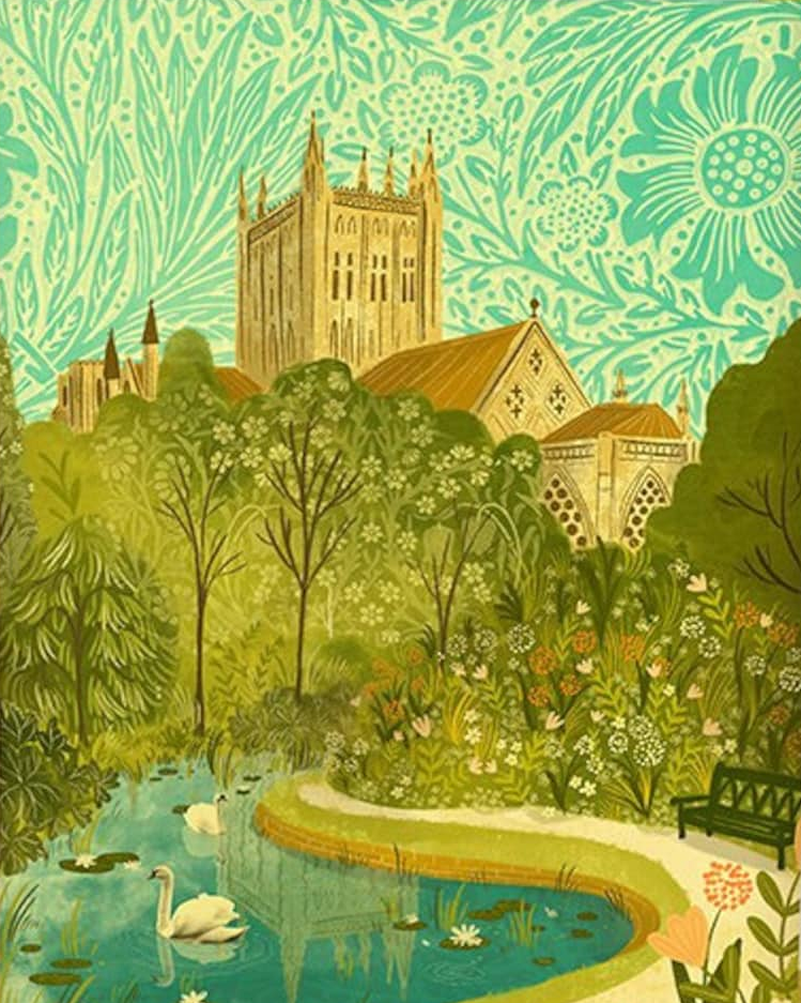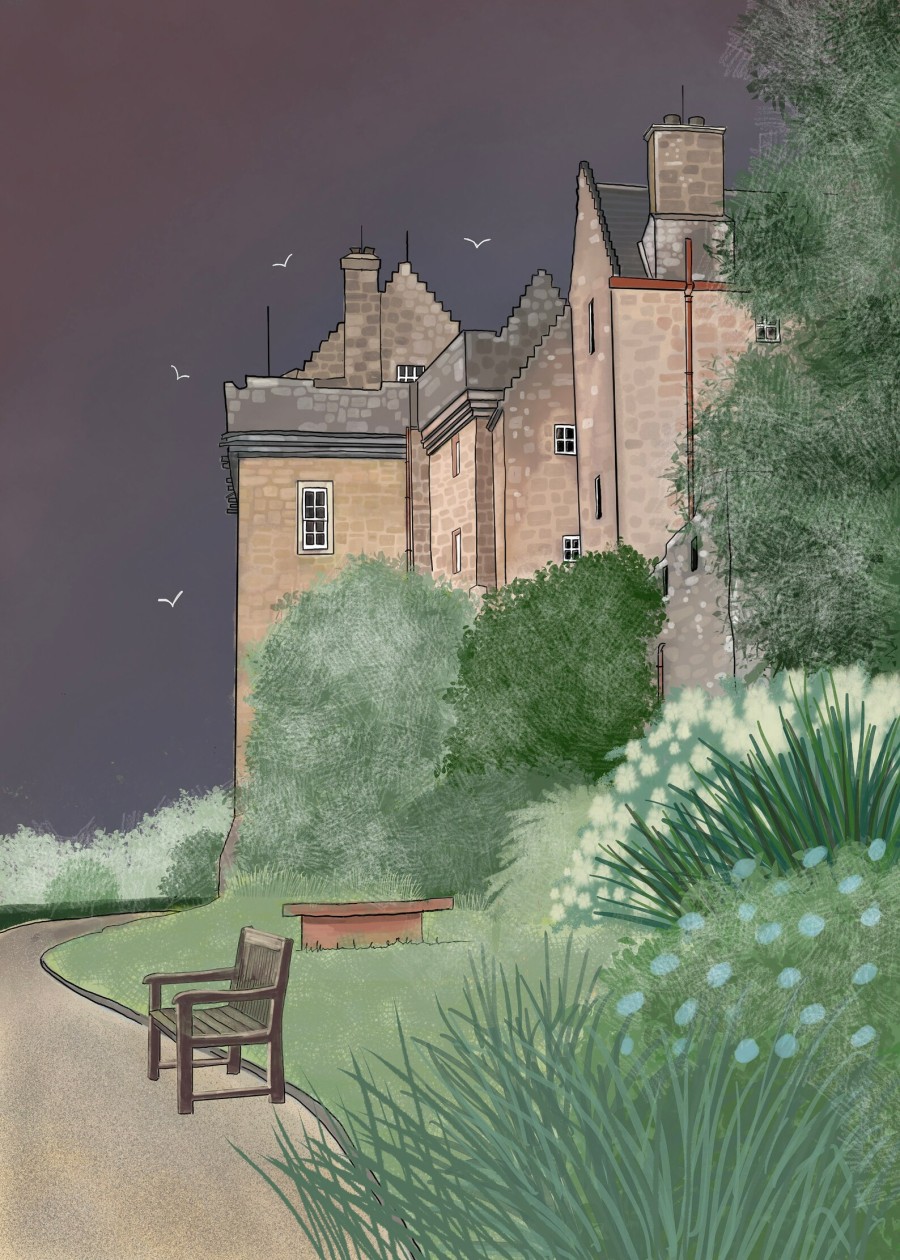Somerset (wetlands, Glastonbury, smallest city)

Wells is England’s smallest city, which surprisingly doesn’t have a train station (there used to be three). For now, the closest station is Castle Cary (a small town 24 miles south of Bath, which lies between the Mendip Hills and Blackmore Vale).
The city is named after three wells (springs) that rise within the city limits, located in the gardens of the Bishop’s Palace.
Wells Cathedral was built between the 12th and 15th centuries, it’s known for unique scissor arches and over 300 carved statues on its West Front. The soaring ceilings and stained-glass windows fill the space with colour, and the Chapter House Stairs are known for their worn stone steps.
Next to the cathedral, The Bishop’s Palace has been home to bishops for over 800 years. The 14 acres of peaceful gardens including ancient wells, which give the city its name. Vicar’s Close is Europe’s oldest residential street, built in the 14th century.
The Strawberry Line Path
Recently three volunteers have helped to clear paths and remove litter along The Strawberry Line Path, a converted railway track near Wells.
Always follow the Countryside Code, to keep all creatures safe.
The 10-mile walk stretches from Yatton to Cheddar, but there are shorter sections like the 2 miles from Wells to Dulcote through ancient woodland, with spectacular views of Wells Cathedral. All routes are wheelchair-friendly (save a steep lane at Axbridge).
The Somerset Levels: Wetlands Rich with Wildlife

Along with the Norfolk and Suffolk Broads, the Somerset Levels are one of the most important wetland habtiats in England, shaped by rivers and peat to provide lowlands that are haven for local wildlife, thanks to reed beds and shallow lakes.
Always follow the Countryside Code, to keep all creatures safe.
Here you’ll find bitterns, marsh harriers and thousands of winter starlings, who call this place home. Along with cranes (England’s tallest birds) who have returned after 400 years.
The Post Track (the world’s oldest wooden trackway used by Neolithic people to navigate reed swamps) is here. And it’s one of few places in England that raft spiders are found. These chocolate-brown spiders often sit near bogs and ponds, and ‘floats like a raft’ when catching prey.
If you’re visiting a local pub, be prepared for a game of skittles (the original version of ten-pin bowling!)
Glastonbury (not just a music festival)
Glastonbury is actually held near the village of Pilton, whose population swells from 1000 to 200,000 each summer. The locals don’t mind that much, as the festival-goers are a pretty peaceful lot, and obviously bring in income for the pubs!
The festival does generate huge amounts of litter. But it has things in order, with chosen litter pickers (who get their own campsite with flushing toilets and meal vouchers) going into action when the festival ends.
Leaving the place pristine within a few days. Unusual items found include:
- A grandfather clock
- A bra with poo in it
- A wig that someone had vomited in
- People sleeping under piles of clothes!
Cheddar Man (England’s Oldest Intact Skeleton)

A Somerset landmark is Cheddar Gorge (nothing to do with cheese!) that sees a 450-foot cliff tower over a winding road, creating a dramatic gateway to the Mendip Hills. Formed by floods during the Ice Age, it’s home to around 100 endangered cave-dwelling Lesser Horseshoe bats.
This area is buzzing with life from soaring skylarks overhead to the quirky black oil beetle (its protruding tummy being described as looking like ‘someone whose waistcoat won’t button up!)’
Always follow the Countryside Code, to keep all creatures safe.
England’s Oldest Person (was black with blue eyes!)
It was here that Cheddar Man was found. He turned out to be England’s oldest ‘whole person skeleton’ ever found. What’s interesting is that he had black skin and blue eyes (a bit like that actor off CSI). So it does indeed suggest that we have African ancestry.
As we speak, Daily Mail hacks are busily concocting their own Wensleydale Man, who looks just like Nigel Farage. The Poke
Two other local boys with blue eyes (with blonde hair) from the village of Cheddar were Matt & Luke Goss (from 90s pop band Bros).
Weston-Super-Mare (a classic seaside resort)

Known for a wide sandy beach, this is ‘the best of the English seaside’, from a resort that lets you see all the way to Wales, on a clear day. It’s England’s second biggest seaside resort, after Blackpool. It’s named comes from Old English for ‘west settlement’ and ‘super mare’ is Latin for ‘on or above the sea’.
Weston Super Mare has the second-highest tidal range in the world, so follow signs to avoid high tides and quicksand. Also read how to keep dogs safe by the seaside.
Marine Lake is a manmade body of water that offers a safe swimming area, when the tide is out. Dogs are not allowed (the beaches have some seasonal restrictions but otherwise are dog-friendly, be sure to follow safety advice above, due to high tides and quicksand).
Sophie’s SUPER Litter-Picking Group!
Sophie’s SUPER Litter-Picking Group is a regional CleanUp UK campaign, with many willing volunteers helping to keep the town clean. Locking Womblers (remember the litter-picking Womblers?) and Cleaner Coastlines are two other community groups that are removing litter left by tourists.
Sophie’s volunteers have so far removed around 7500 bags of litter from the town. One volunteer said along with alcohol cans/bottles and takeaway rubbish, he picked a yellow medical bag (likely from a nursing home) full of adult nappies left in front of a gate.
The Good News Post (in memory of Jill)

Jill Dando was raised here, and there is a memorial garden in her name, after her tragic murder. ‘Jill’s Garden’ took 3 days of work by the BBC Ground Force team, and contains her favourite flowers (roses, lavender and trees) plus a foaming fountain, a disabled ramp and a sensory garden.
The Good News Post is an online digital newspaper, packed with good stories. It’s powered by an ‘expanding army’ of young journalists age 7 to 18.
All trained by professionals, inspired by the memory of BBC TV reporter Jill Dando, in her manner of kindness, empathy and positivity (her brother who is also a journalist helps out). Already some have interviewed MPs and the site has its own mental health and disabilities correspondents.






